Medieval history was dominated by warrior kings, but there have been many powerful warrior queens too, whose tales of courage and daring are all the more remarkable given the times in which they lived
Words by Neil Jones
Warrior queens: Boudicca and Elizabeth I
On the bank of the River Thames opposite the Houses of Parliament a dramatic bronze statue depicts a spear-wielding charioteer. This is Boudicca, Queen of the Iceni tribe, who in AD60 raised a spectacular (if ultimately unsuccessful) rebellion across East Anglia against Roman rule, in the process sacking Colchester, St Albans and London. The Roman chronicler Tacitus described her flowing red hair and her rallying cry to her tribesmen – a precursor of another redheaded warrior queen, Elizabeth I, and her legendary address to troops when the Spanish Armada threatened invasion of her realm in 1588.
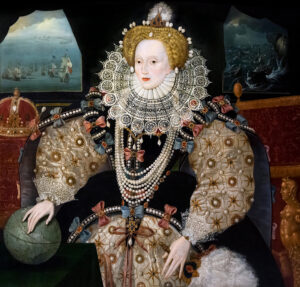
Boudicca and Elizabeth have long been celebrated as iconic female embodiments of power: outliers either side of a medieval era that generally venerated male bellicosity and looked with suspicion at ‘strong’ females who upset the ‘natural order’; royal girls were destined for political marriages and to produce male heirs.
Warrior Queens: Aethelflaed
Yet numerous warrior queens showed they had bigger ideas. Aethelflaed (c.870–918), daughter of King Alfred the Great of Wessex, deserves our attention as an early medieval influencer. The popular story is well known of how Alfred, the pre-eminent Anglo-Saxon king, fought off Danish invaders in the 9th century and how his grandson Aethelstan completed the task of unifying fractured territories to become, effectively, the first King of England.
Yet Aethelflaed too played a crucial role, leading to claims Royal girls were destined for political marriages and to produce male heirs. Yet numerous warrior queens showed they had bigger ideas that without her ‘England might never have happened’. Aethelflaed was married off as a teenager to Aethelred, the most powerful man in Mercia: binding the midlands kingdom to the dominant house of Wessex. She dutifully produced a daughter and, “a woman of extraordinary prudence, justice and strength of character”, she also took on her ailing husband’s government. From his death in 911 she ruled in her own right as Lady of the Mercians.

Working in strategic conjunction with her brother Edward the Elder, who had succeeded Alfred, Aethelflaed helped to reverse and repel Viking incursions. She built, fortified or restored key places like Chester, Gloucester, Warwick and the old Mercian capital of Tamworth, and in 917-918 she took control of Viking occupied Derby and Leicester. Even her enemies respected her and York agreed to submit just before her death in 918. Aethelflaed, whose role in the evolution of England has gained a spotlight through studies of lesser known contemporary annals, was buried in St Oswald’s Priory in Gloucester. She is commemorated by statues in Tamworth, where the castle tells her tale.
Warrior Queens: Matilda
Two centuries later the daring of King Henry I’s daughter Matilda (c.1102–67) captures the imagination. After the drowning of his legitimate male heir in a shipwreck in 1120, Henry nominated Matilda as his heiress and obliged his reluctant barons to swear support. But when the king died in 1135 his nephew Stephen grabbed the Crown, prompting an outraged Matilda to mount an offensive, backed by her illegitimate half-brother Robert of Gloucester.
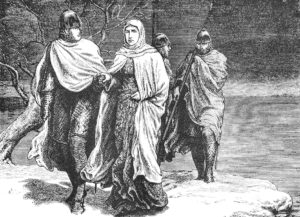
During ‘The Anarchy’ of civil war and lawlessness that ensued, Stephen was defeated at Lincoln in 1141, Matilda was declared Lady of the English, and preparations began for her coronation. Unfortunately the first Queen (as opposed to queen consort) of all England would remain uncrowned and rule for less than a year. Accused of an “arrogant demeanour instead of the modest gait and bearing proper to the gentler sex”, she revoked Londoners’ traditional tax concessions, alienated those around her and was driven from the capital.
During ongoing skirmishes Matilda made several audacious escapes: from Devizes in 1141 by having herself disguised as a corpse; and from a blockaded Oxford Castle in 1142 by donning a white cloak as camouflage and sneaking away across the winter snow. In the end civil war fizzled out, Stephen agreed by the Treaty of Wallingford (1153) to acknowledge twice-married Matilda’s son Henry as his heir, and Matilda lived to see King Henry II ascend the throne in 1154: a victory for her dynastic ambitions.
Warrior Queens: Isabella of France
The most notorious of medieval warrior queens is Isabella of France (c.1292–1358), yet for a while in her lifetime she was perceived as a saviour. Unhappily married to Edward II, who neglected her for his favourites, the foppish Piers Gaveston and ruthless Hugh Despenser, Isabella nevertheless bore the king four children and tried to promote peace between him and his increasingly disgruntled barons.
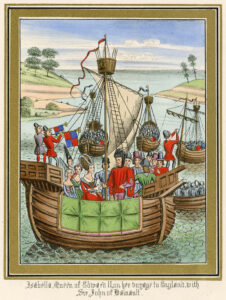
In 1325, having been provoked once too often by the loathsome Despenser, Isabella contrived to go on a diplomatic mission to France and had 12-year-old Prince Edward sent to join her. With the royal heir under her control she then issued the king with an ultimatum to get rid of Despenser: “I protest that I will not return until this intruder has been removed.”
When Isabella did return, in 1326, it was with an army and backed by her lover Roger Mortimer, who was among the many lords fed up with the king’s fractious government. Edward was obliged to abdicate in favour of his son in January 1327, and thus Isabella rid the country of its unpopular king.
Public mood soon turned against Isabella, however, when rumours spread of her husband’s vicious murder in Berkeley Castle and people saw the greed with which she and Mortimer enriched themselves.
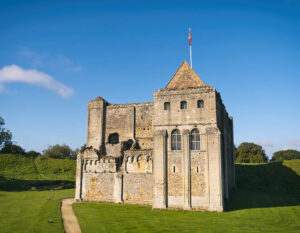
In 1330 Edward III resolved matters by snatching Mortimer from his mother’s embrace at Nottingham Castle and having him executed as a traitor. Although arrested with Mortimer, Isabella was never charged. She was sent to Castle Rising in Norfolk and enjoyed a long and rather comfortable ‘retirement’; she even joined an order of nuns and, at her request, her husband’s heart (conserved in a casket) was buried with her when she died. Poet Thomas Gray’s later image of Isabella prevails:
“She-Wolf of France, with unrelenting fangs, That tear’st the bowels of thy mangled mate…”
Warrior Queens: Margaret of Anjou
“She-Wolf” was a sobriquet coined by William Shakespeare for another medieval warrior queen, Margaret of Anjou (1430–82), consort of Henry VI. Margaret too is remembered for ‘unfeminine’ brutality when, after the Battle of Wakefield (1460), she ordered the head of the dead, defeated Duke of York to be displayed wearing a paper crown on the city of York’s Micklegate Bar (gateway) in mockery of his pretensions to be king. In Shakespeare’s Henry VI, Part III, York rails against Margaret before his death:
“She-wolf of France, but worse than wolves of France, Whose tongue more poisons than the adder’s tooth! How ill-beseeming is it in thy sex To triumph, like an Amazonian trull [harlot] Upon their woes whom fortune captivates!”
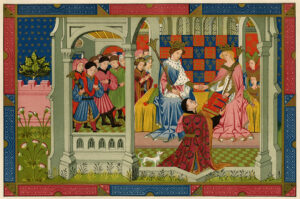
Margaret, married to Henry VI in 1445 as part of a rapprochement deal between France and England, was beautiful and energetic: the antithesis of a king prone to mental breakdowns. Throughout the dynastic Wars of the Roses between Henry’s House of Lancaster and the House of York it was Margaret who tirelessly spearheaded the royal cause on behalf of her husband and their son, Edward.
But Margaret’s hopes were extinguished at the Battle of Tewkesbury (1471) where Edward, “the only light of his mother’s eyes”, was killed. Henry’s subsequent murder left her nothing to fight for and she would live out her final days in France, though she bequeathed a cultural legacy in the founding of Queen’s (later Queens’) College at Cambridge.
This is an extract, read the full version in the January/February issue of BRITAIN Magazine available to buy here.
Read more:

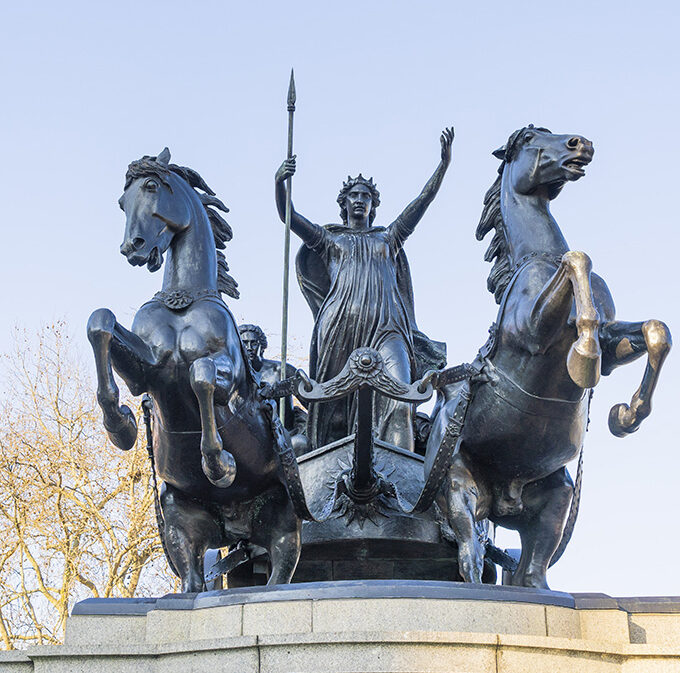




 © 2024
© 2024